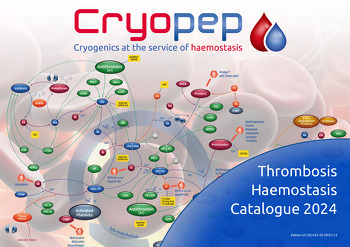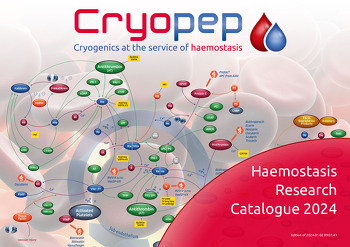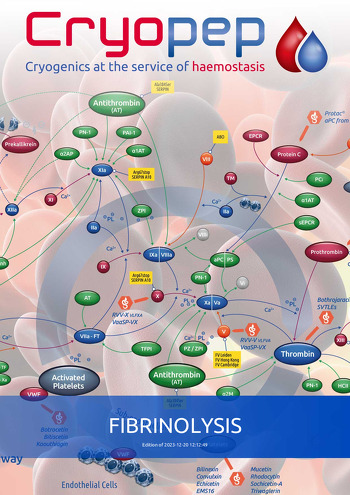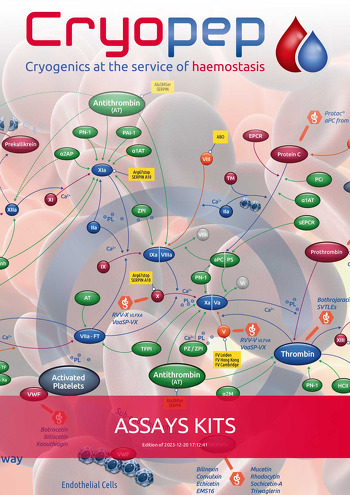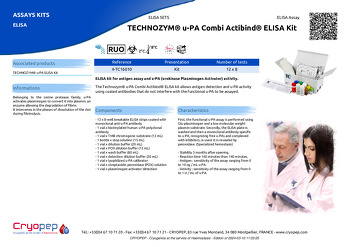HEMOSTASIS COAGULATION ROUTINE FIBRINOLYSIS UROKINASE PLASMINOGEN ACTIVATOR
HEMOSTASIS COAGULATION RESEARCH ASSAYS KITS ELISA
TECHNOZYM® u-PA Combi Actibind® ELISA Kit






ELISA Assay
ELISA kit for antigen assay and u-PA (urokinase Plasminogen Activator) activity.
The Technozym® u-PA Combi Actibind® ELISA kit allows antigen detection and u-PA activity using coated antibodies that do not interfere with the functional u-PA to be assayed.
Access on the manufacturer's website TECHNOCLONE
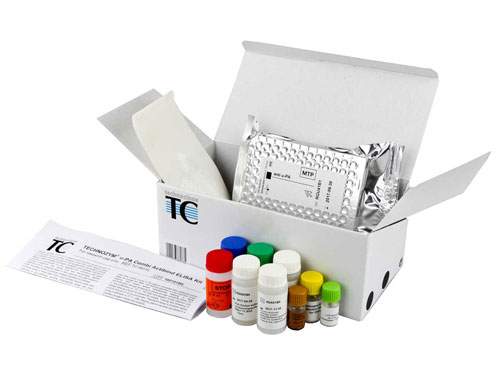
| Reference | 4-TC16010 |
|---|---|
| Presentation | Kit |
| Number of assays | 12 x 8 |
| Quote |
Price list, safety data sheets and notices are accessible to our registered customers.
| Reference | Presentation | Number of assays | Quote | Product sheet |
|---|---|---|---|---|
| 4-TC16010 | Kit | 12 x 8 |












